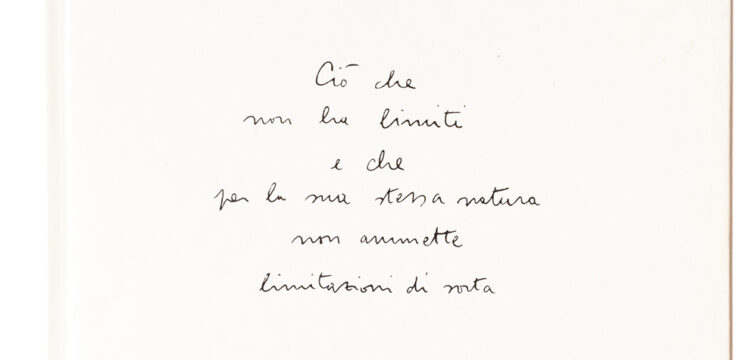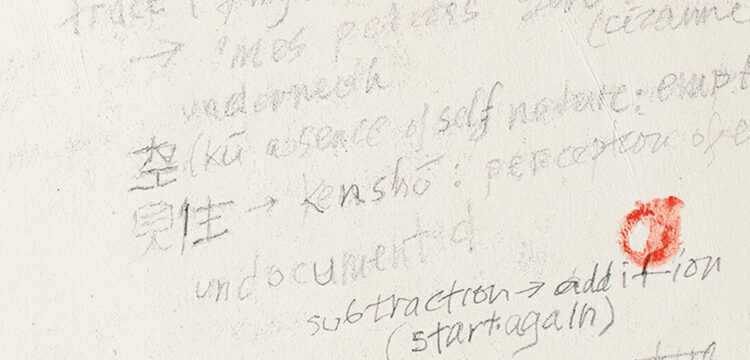A Fold
What makes an artist’s book an artist’s book?
The exhibition Un foglio è un foglio, ma piegato enne volte diventa un libro d’artista (a sheet is a sheet, but folded n times it becomes an artist’s book) curated by REPLICA on the white walls of Spazio Choisi in Lugano seems to be more than just an answer to this question, it seems to place–and expose–before the eyes of the public tools and processes to explore its meaning. The field of investigation and point of departure is the story of the small independent publishing house Libri Tasso (L.T.), founded in Bologna between 2014 and 2015 from an idea of Giuseppe De Mattia and now composed also of the photographers Carlo Favero and Eleonora Ondolati. A project, by its very nature, capable of triggering relationships and reflections that embrace the history of art and the tradition of the artist’s book, but also the history of publishing and in particular the world of fanzines and the DIY (do it yourself) approach.
If the diffusion of the book as an instrument and further space for artistic research can be traced back to the 20th century and the historical avant-gardes, the origins of the fanzine can be find a few decades earlier to the 1930s and 1940s in the field of science fiction with the production of science fiction magazines created with the aim of discussing, deepening and sharing the love for the newborn literary genre. Since then, the fanzine has spread all over the world, embracing other themes from music to comics, crossing the decades, embracing social and cultural changes, transforming itself continuously while maintaining certain aspects such as home production, cheapness, use and reuse of paper and poor materials. These elements can be found in the production of Libri Tasso, which takes its name from De Mattia’s home in Via Torquato Tasso, and whose initial production was aimed at self-publication, mainly in the photocopy shop. And it was within the walls of his home that the first edition of Libri Tasso came to life. Senza pane, senza matita is both the result and the documentation of a home performance in which the artist, without a pencil for fourteen days, transformed slices of bread burnt in the toaster into a drawing instrument. The publishing project, therefore, not as a goal or as a final product, but as part of a creative process of which the book is an integral part. This approach is reflected in the exhibition itself, in which the curators Lisa Andreani and Simona Squadrito display the edition, the draft of the project and the drawings made during the performance.
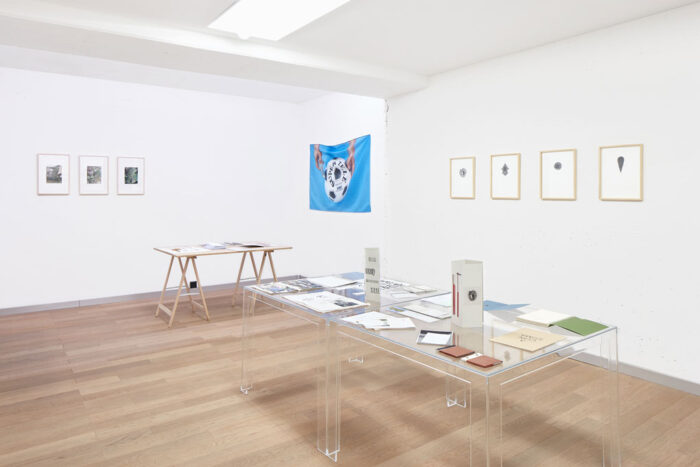
Another element in the Libri Tasso editions that recalls the freedom of the fanzine is the format, often the result of a folded, cut or torn sheet. Far from the constraints of an editorial structure–editorial staff, editor, graphic designer, proofreader–and market demand, the team of Libri Tasso, just like zinesters, are free to pursue the path of pure experimentation in terms of both content, printing and binding techniques. The result is a series of limited-edition publishing projects with a handcrafted look, not in the sense of aesthetics but in the sense of doing. He Just Scrounges, for example, is a book made up of a series of photographs documenting a private handwritten performance onto an ugly catalogue from a Bologna’s department store: in the shots De Mattia steals posters from street signs, peeling them off their supports, and then reusing them after whitening them with cementite.
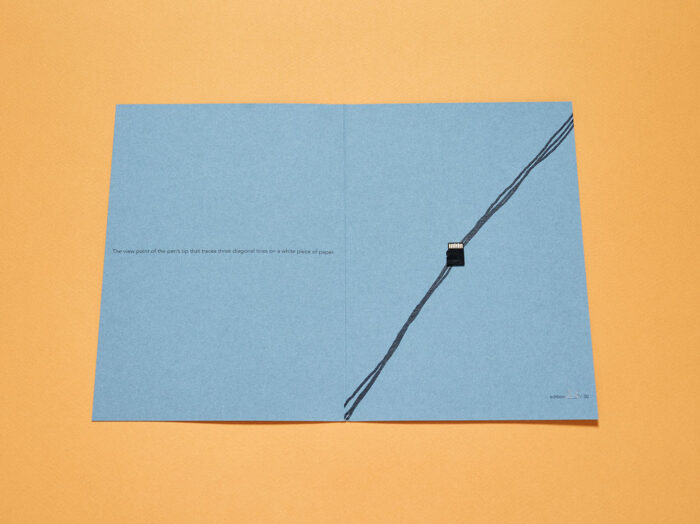
And it is precisely De Mattia’s ability to give new form to details and unexpected situations, to translate occasions into objects worthy of attention, that makes Libri Tasso’s productions artist’s editions. Examples of this are A con stima (2017), an edition that pays homage to the mysterious path that books take, starting from the shelves of our homes and ending up on used book stalls, where they can become the property of new and different owners, and Supertele/Super Vaso (2019), which in 4/5 sheets (20×30 format) tells the story of the transformation of a plastic ball with a poor bounce into a vase. The banality of everyday life as it happens, that sense of fetishism directed at the everyday object, returns in the prototype 45 lampadari cazzo (2017), a quasi-edition depicting all forty-five Fascist-era chandeliers hanging under the porticoes of Bologna’s Via Matteotti, which, hanging over the entire street, show all their virile irony.
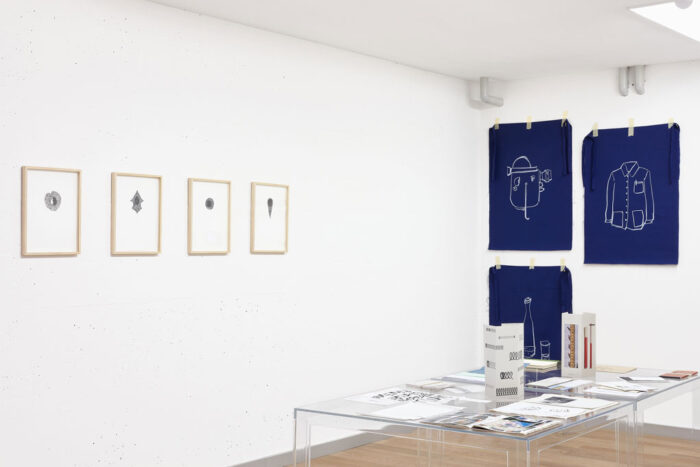
Further inserting Libri Tasso’s editions into the tradition of the artist’s book are Picchio and Talking Springs, both part of the A3plus series and created using this paper format. Picchio Veloce (2015) is made from an A3plus sheet folded into seagull wings that allow the book to be leafed through from all sides and transform the edition itself into a sculpture capable of supporting itself and presenting itself in a plastic way. A project for which, once again, other elements are proposed in the exhibition, such as some drawings of woodpecker burrows made with a specially constructed instrument inspired by the movement of the American woodpecker’s beak. The following year’s Talking Springs, with which Libri Tasso pays homage to visual poetry, is a collection of sixteen loose sheets of paper containing enlarged photographs of an internal pen spring that, when rotated by ninety degrees, takes on forms similar to the vowels A, E and O. Accompanying the exhibition is an audio note recorded by Emidio Clementi, musician and writer, who reads aloud the poem created by the sequence of vowels of the alphabet generated by the spring’s poses. Not only paper then. Embracing a multidisciplinary approach and taking its place in the context of contemporary convergent culture, Libri Tasso has created editions with multiple languages such as Three Lines, which contains a micro SD card on which the artist’s video of the same name is recorded: the endoscopic image of the journey of the tip of a black felt-tip pen as it crosses a 30×40 sheet of paper diagonally.
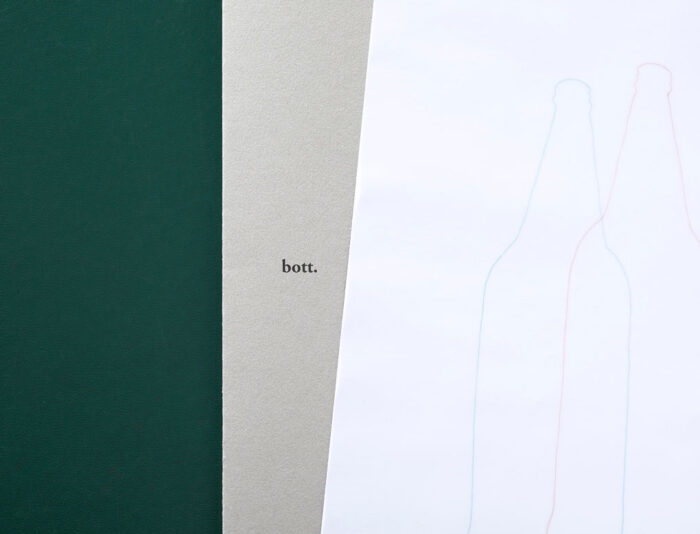
The first exhibition dedicated to the publishing house, which today also produces works of other authors such as Luca Coclite and projects such as Casa a Mare (Lecce) or Gelateria Sogni di Ghiaccio (Bologna), Un foglio è un foglio, ma piegato enne volte diventa un libro d’artista accepts Spazio Choisi 01’s invitation to show editorial productions in a different dimension, both far from the editorial and museographical one, adopting the principles of exo-publishing. So much so as to allow the public to touch and leaf through the editions just as De Mattia did with Jonas’ tree on show here in a special edition made up of thirteen drawings inspired by Mekas’ diaries and distributed free of charge on the occasion of the project I had nowhere to go (2019) by Home Movies-Archivio Nazionale del Film di Famiglia Bologna in the form of sheets scattered along a staircase that visitors were invited to collect and bind themselves at the end of the route.



